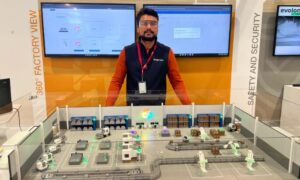In the realm of modern technology, the marriage between cloud computing and data centers is a symbiotic relationship that fuels the digital ecosystem. As businesses increasingly migrate towards cloud-based solutions to enhance efficiency, scalability, and accessibility, the question arises: Is a data center still an essential component of the cloud computing landscape? Let’s delve into the intricacies of both technologies to decipher the significance of data centers in the era of cloud computing.
Understanding Cloud Computing
- Cloud Computing Unleashed
Cloud computing, a transformative paradigm, empowers organizations to store, process, and access data and applications over the internet. This technology transcends traditional on-premises limitations, providing on-demand resources, scalability, and cost-effectiveness. The cloud model encompasses three main service models: Infrastructure as a Service (IaaS), Platform as a Service (PaaS), and Software as a Service (SaaS).
- Key Characteristics of Cloud Computing
On-Demand Self-Service: Users can provision and manage computing resources as needed, without human intervention from service providers.
Broad Network Access: Services are available over the network and accessible through various devices like laptops, smartphones, and tablets.
Resource Pooling: Computing resources are pooled to serve multiple customers, with different physical and virtual resources dynamically assigned and reassigned.
Rapid Elasticity: Resources can be rapidly and elastically provisioned to scale out or in, depending on demand.
Measured Service: Cloud systems automatically control and optimize resource use by leveraging a metering capability at some level of abstraction.
The Role of Data Centers in Cloud Computing
- Data Centers: The Backbone of Cloud Services
Data centers are the physical facilities that house the servers, storage systems, networking equipment, and other components necessary for cloud services to function. They form the backbone of the cloud, providing the infrastructure required to store and process vast amounts of data.
- Security and Reliability
One of the primary reasons data centers remain indispensable in the era of cloud computing is the emphasis on security and reliability. Data centers are designed with robust security measures, including biometric access controls, surveillance systems, and fire suppression systems. This ensures the protection of sensitive data and continuous service availability, factors critical for businesses and organizations.
- Data Center Geographic Distribution
Data centers are strategically distributed across different geographical locations, offering redundancy and disaster recovery capabilities. This geographic diversity ensures that if one data center faces an outage due to natural disasters or other unforeseen circumstances, others can seamlessly take over, maintaining uninterrupted service delivery.
- High-Performance Computing
Certain applications, especially those requiring high-performance computing (HPC), may not be fully accommodated in a cloud-only environment. Data centers, equipped with specialized hardware and infrastructure, play a pivotal role in supporting these compute-intensive workloads, ensuring optimal performance and responsiveness.
Hybrid Cloud: The Convergence of Data Centers and Cloud Computing
- Hybrid Cloud Solutions
The hybrid cloud model emerges as a harmonious convergence of on-premises data centers and cloud computing. This approach allows organizations to leverage the benefits of both worlds, retaining certain workloads on-premises while utilizing cloud services for others.
- Optimizing Performance and Scalability
Hybrid cloud solutions enable businesses to optimize performance and scalability based on the specific requirements of their workloads. Critical applications can reside in on-premises data centers, offering low-latency access, while less-sensitive workloads can harness the scalability of the cloud.
Certain industries and regulatory frameworks mandate strict data residency and compliance requirements. Hybrid cloud solutions provide the flexibility to store sensitive data within the confines of on-premises data centers, ensuring adherence to regulatory standards while still harnessing the agility of the cloud for other operations.
Challenges and Evolving Trends
- Challenges in the Cloud-Only Model
While cloud computing offers unprecedented advantages, it is not without challenges. Issues such as potential downtime, security concerns, and data sovereignty challenges can be amplified in a cloud-only model. The reliance on internet connectivity for accessing cloud services also introduces latency, which may not be suitable for applications requiring real-time responsiveness.
- Edge Computing and Decentralization
The rise of edge computing introduces a paradigm shift, distributing computing resources closer to the point of data generation. This trend reduces latency, enhances real-time processing, and addresses the challenges associated with centralized cloud models. Edge computing, however, does not eliminate the need for centralized data centers but rather complements them, creating a distributed computing architecture.
- Sustainable Data Centers
As environmental concerns become increasingly prominent, the data center industry is evolving to embrace sustainable practices. Green data centers, powered by renewable energy sources and designed for energy efficiency, are aligning with the global push for environmentally responsible technology solutions. Integrating such sustainable data centers with cloud computing reflects a conscientious approach to technology deployment.
Conclusion
In the intricate tapestry of modern technology, the relationship between data centers and cloud computing is far from obsolete. While cloud computing represents a revolutionary leap towards flexibility and scalability, data centers remain the bedrock, ensuring security, reliability, and high-performance computing capabilities. The hybrid cloud model emerges as a testament to the coexistence of these technologies, allowing organizations to tailor their infrastructure to specific needs. Challenges in the cloud-only model are met with evolving trends, such as edge computing and sustainable data centers, reinforcing the symbiotic relationship between data centers and cloud computing. In the grand symphony of technological progress, the question of whether a data center is essential for cloud computing finds its answer in the harmonious integration of these powerhouses, each playing a crucial role in shaping the digital landscape of tomorrow.



































